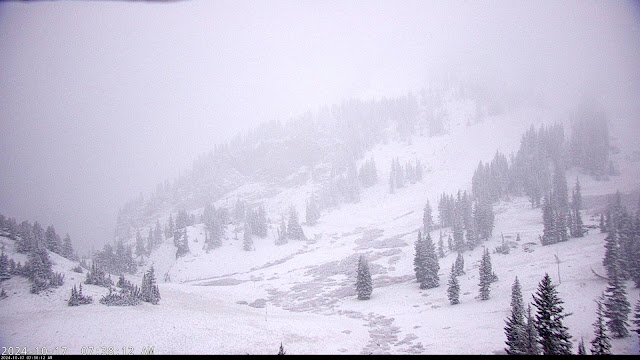It's been a while since we did a list on this blog, so let's create a list of 10 scary things for Halloween:
- Not only is this season a crappy one for snow, but we have several more in the rest of the 2020s, resulting in further decline of the Great Salt Lake.
- I wake up one day and all of the code used to create products for weather.utah.edu is gone. Or worse yet, I just accidentally delete it. Even with backups, it would take a huge amount of time to get everything running again.
- I abandon the Wasatch Weather Weenies due to the demands of new "workload policies" being implemented at the University of Utah
- The 10% budget cuts being floated by legislative leaders for the University of Utah come to fruition and instead of cutting administration, most of the pain is passed down to instructional units that are already stressed by recent enrollment increases.
- The legislature passes a revised version of last year's Senate Bill 226, the so-called School of General Education Act, establishing a new School of General Education at the University of Utah with all students required to take mandated courses taught by new faculty who are commited to "traditional" general education.
- UDOT accelerates plans for the Little Cottonwood Canyon gondola. To pay for it, they propose a sales tax for Salt Lake City and Park City. The cost for a round-trip ride will be $75, but for $60 you can get a one-way ticket and then ski down a new trail that they will construct along Little Cottonwood Creek.
- The Wasatch Front continues to add 45,000 residents a year and every one of them is a digital nomad that skis 50+ days a year.
- Powder Mountain goes fully private with a gated entry at the bottom of SR-158.
- Deer Valley expands into the Mayflower area only to discover that it hardly snows there. Oh wait, this one is already scary.
- Alta announces plans to build a high-speed six pack directly from the Wildcat base to the top of High Boy. To deal with the added volumes of skiers, upper High Boy and Stonecrusher will be covered by extensive snowmaking. Whippet poles will be required unless you ski Greeley Bowl.
- The current storm is a bust and produces only 2" at Alta.


































